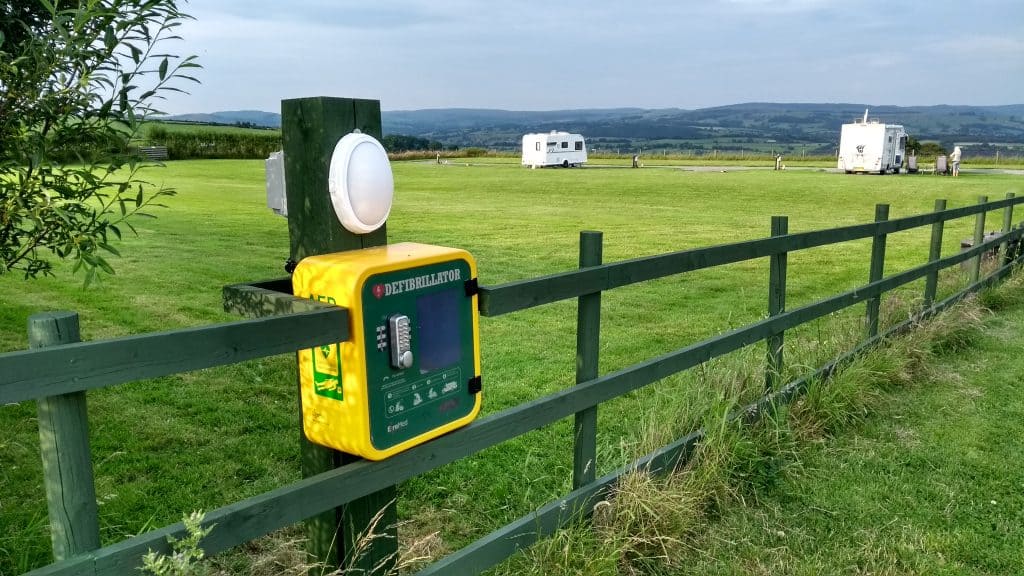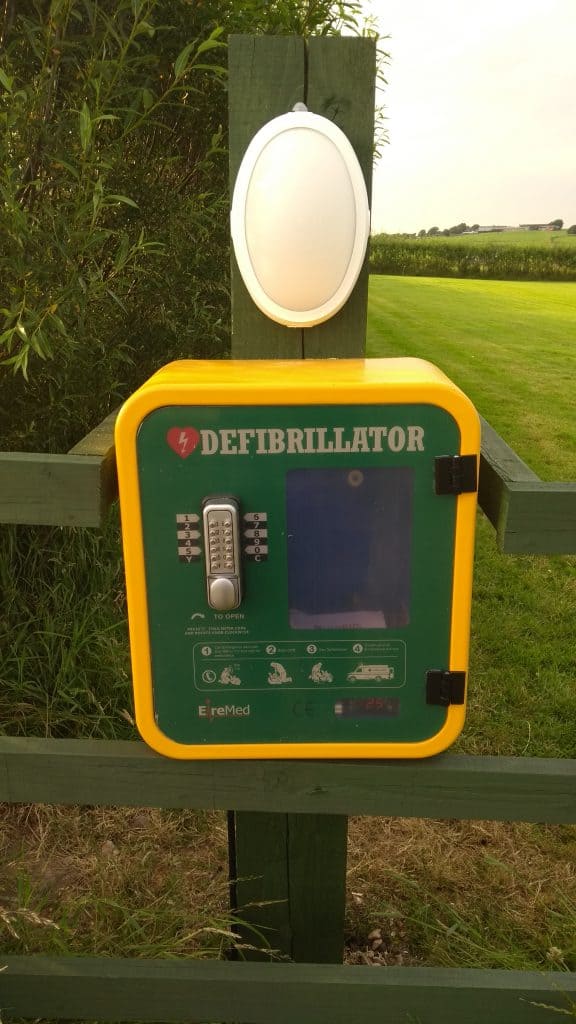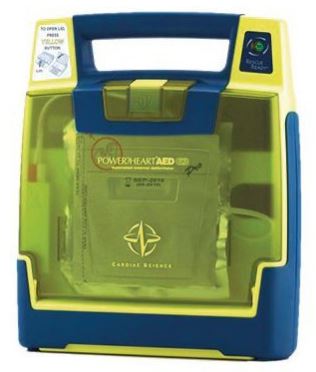
In early 2019 I was contacted by our local councillor about a portable defibrillator scheme. There are a few defibrillators in the local area and the council were wondering if I would be interested in having a cabinet located at Horton Common. Without hesitation, I said yes. We do have to cover the small running costs of the defibrillator cabinet. However, the benefits easily outweigh those costs.
Around 60,000 out-of-hospital cardiac arrests occur in the UK every year. The British Heart Foundation state for every minute that passes trying to get a defibrillator to an individual suffering a cardiac arrest their chance of survival reduces by up to 10%. However, if a portable defibrillator is nearby survival rates increase to around 74%.

AED Cabinet
AED stands for Automated External Defibrillator. Essentially it means the cabinet contains a defibrillator which has a computer which provides visual and audible prompts on how to treat a patient suffering from cardiac arrest. Similarly, the user controls are kept to a minimum (one button) and in many cases, the user just needs to listen and follow the prompts. You can read more about AED cabinets in this document from the St John Ambulance (loads in a new window).

However, the cabinet does not actually charge the defibrillator, the unit has a battery which is inspected and changed on a regular basis. The role of the cabinet is to provide weather protection and security for the defibrillator. The AED cabinet has a power supply with a heater set at 25 degrees. This is to keep the battery in good condition. Similarly, as you may know, if you have read my post on leisure batteries, if a battery is exposed to freezing temperatures it can cause some serious damage.
To make the AED cabinet easier to find we have added a light above the cabinet with a photocell. Therefore, under low light conditions, the light will come on and illuminate the box.
Powerheart G3 Defibrillator
The type of defibrillator which has been fitted in our cabinet is the Powerheart G3. This make of defibrillator is the only unit which has been chosen as part of the National Defibrillator Network. Therefore, the Powerheart G3 one of the best defibrillators available and costs around £3,000.

I’ve seen the Powerheart G3 in action with its voice command prompts. The video below from the DefibShop gives a demonstration of how the G3 works.
The AED cabinet installed at Horton Common is for general public use. I’m happy to support this public scheme, at the same time it provides an additional piece of mind for our guests.
Public Defibrillator Scheme Conclusions
I believe small caravan sites such as ours could serve as excellent locations to build up the public network. Above all, AED cabinets need a source of power. AED cabinets also need to be located where the public can easily find them during a 999 call. Similarly, small caravan sites are often located in rural and remote locations. Rural locations currently have a very limited number of AED cabinets. In addition, they often have a source of power and are commonly listed on Google Maps.
Therefore, I’ve made the Camping and Caravanning Club aware of our new AED cabinet. I would like the club to promote the National Defibrillator Scheme to all of their small certificated sites (CS’s).
